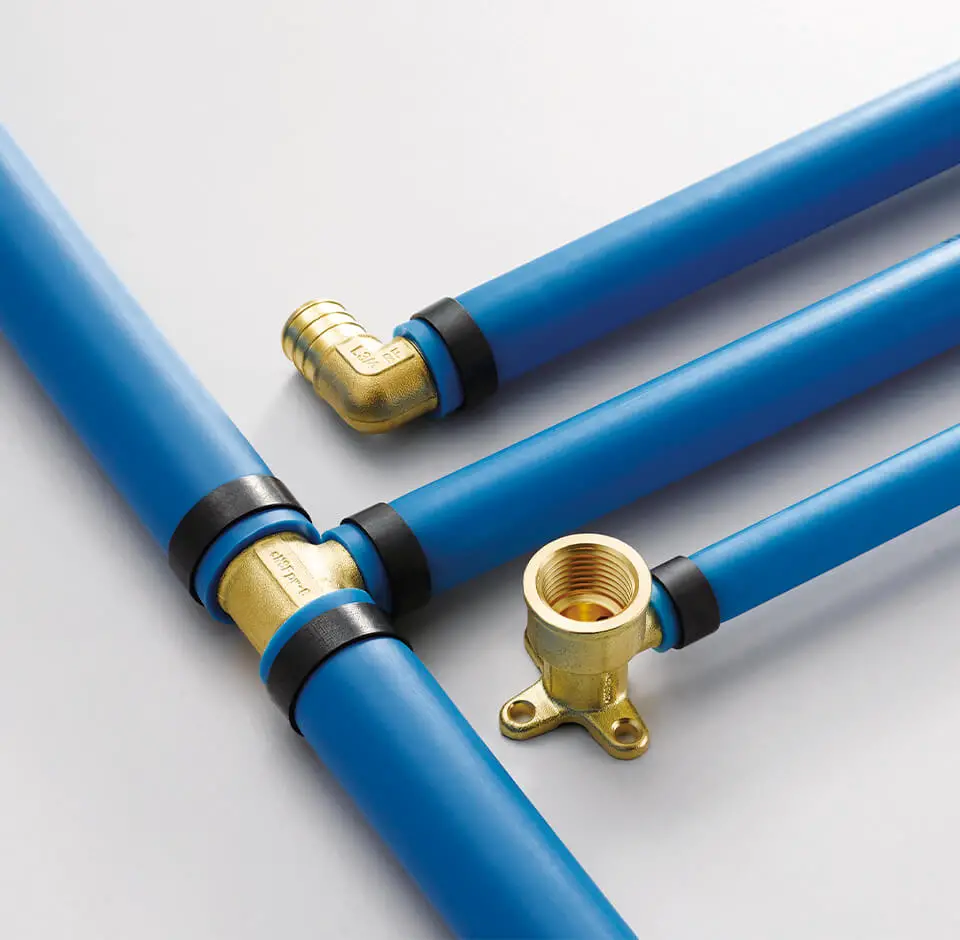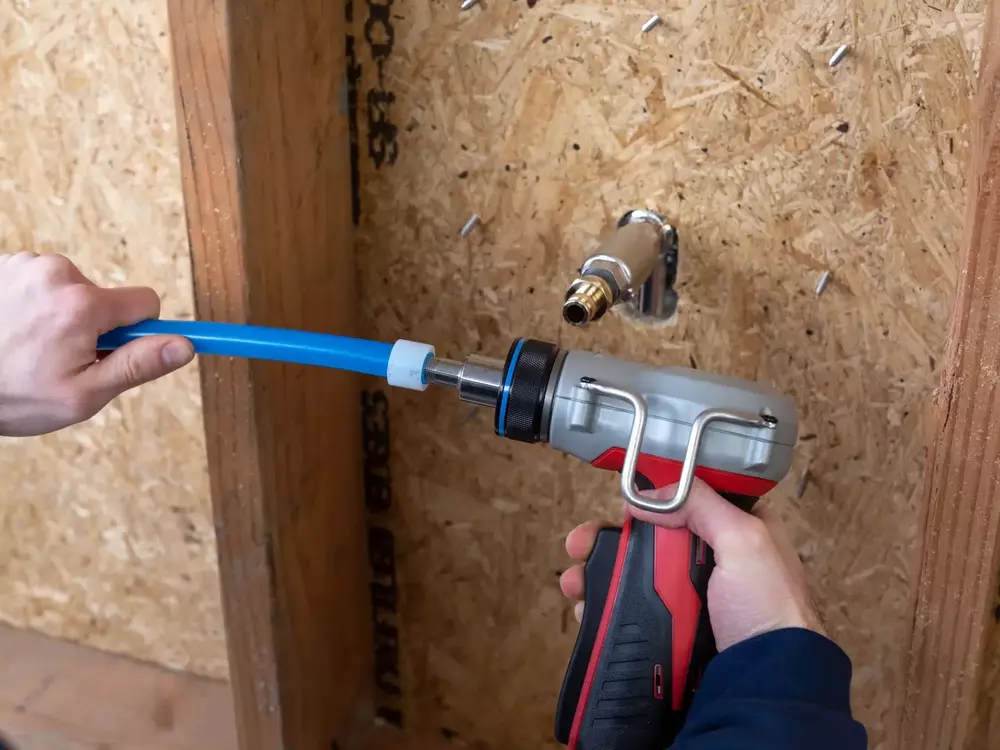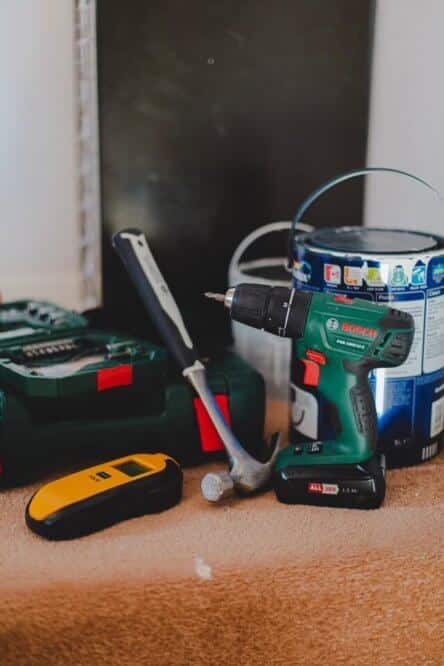Why is PEX plumbing bad?
PEX pipes are a developing trend in the plumbing industry. In the 1980s and 1990s, PEX pipes gained popularity, and thousands of homes still use them today. Many plumbing companies replace copper and galvanized steel pipes with PEX pipes, particularly in remodeling and new building projects.
PEX pipes are constructed from cross-linked polyethylene, a flexible plastic material with various benefits.
Many customers decide to use PEX plumbing because of the high copper prices. PEX is also chosen over copper and polyvinyl chloride (PVC) piping because it can be bent to accommodate a proper fitting.
PEX pipes are also among the simplest to install. Nevertheless, they have several drawbacks which can cause homeowners damage worth thousands of dollars. The tube and some chemical components in the water interact chemically in several ways. This results in leaks in both the hose and the fittings.
Many break down when they come into contact with chlorine in the water, are exposed to the sun directly, or when their parts become dezincified and corrode as a result. The following are some of the reasons why PEX plumbing is bad.
Why is PEX Plumbing Bad?

- Susceptible to chlorination
Chlorine and PEX don’t mix nicely. PEX pipes are not a wise choice if you reside in a region where the water is heavily chlorinated.
Chlorination severely reduces the PEX plumbing system’s longevity and durability. Chlorine in the water inside PEX pipes hastens the cross-linked polyethylene’s brittle oxidative failure [1].
This malfunction causes the pipes to suddenly leak and occasionally even burst.
Manufacturers started incorporating antioxidants into the PEX piping to address this issue [2].
However, the oxidation was only marginally delayed as a result. Currently, chlorine first weakens the antioxidants before eventually making its way to the pipe and causing failure.
- They are sensitive to Light
PEX piping is not very versatile due to its light sensitivity. PEX cannot be used outside the home where it will be exposed to UV rays for an extended period [3].
The ultraviolet light from the sun might cause the synthetic material of the pipes to gradually dissolve. The lifespan of PEX water pipes has been reported to be impacted even by light bulbs.
Plumbers must therefore situate PEX pipes away or hide them from sunlight and UV light because of their sensitivity to these rays. Sunlight-related failures include a loss of suppleness and flexibility. This problem can be solved by avoiding leaving the pipe exposed to the sun for six continuous months.
- Prone to Permeability
Due to their permeability, PEX pipes are more prone to damage than copper and galvanized steel pipes.
Manufacturers claim that PEX pipes are permeable to particular products and oxygen, although oxygen permeability by itself is not a cause for concern.
In closed networks, oxygen can, for instance, lead to oxidation or corrosion in the heating components of the water supply system. This exposes the water in underground pipes to come into contact with oil slicks and pesticides that slip through the pores to contaminate drinking water [4].
Rodent assaults on PEX pipes are a relatively frequent issue that many users have noticed. Rodents’ strong teeth can easily gnaw through PEX water lines, unlike those made of copper. As a result, the entire waterline is damaged, which eventually causes leaks and contamination.
To fix this problem, have your water pipes tested for permeability. Consider also using a material that resists rat attacks if your home has a specific rodent problem. You can hire a specialist to exterminate rodents before they cause too much harm. If there is a rodent infestation in your neighborhood, you might want to consider this.
- They’re affected by chemical leaching
Some types of PEX are known to release hazardous substances and pollutants, affecting the smell and taste of water. Chemical residue from the manufacturing process remains in the pipe during the manufacturing process, increasing the chlorine content.
Over-chlorination is a significant contributor to chemical leaching from PEX pipes. Before putting PEX water pipes in your home, it’s crucial to be aware of this risk. Sometimes the taste and smell are so revolting that people are forced to completely replace their pipes.
- May burst under high pressure
Failure to comply with the pressure testing criteria may lead to leaks as well as the need to remove entire walls or floors, fixtures, and make other expensive repairs.
A normal hydrostatic pressure rating for PEX tubing is 160 psi at 73°F. It has a 100 psi pressure rating at 180°F. [5]
But different manufacturers produce distinct kinds of PEX tubing. This makes it difficult to create a single, uniform set of pressure ratings. Anywhere pressure ratings are given, including in product literature, the real ratings are indicated.
The material and pipe wall thickness have a significant impact on the pressure rating as well. But pressure decrease is yet another crucial element.
Friction between two locations, which results in a difference in total pressure, prevents fluid from flowing through a tube. The flow through a plumbing network can be significantly impacted by pressure drop.
- They’re affected by extremely low temperatures
Regardless of the temperature, PEX piping works well inside a home’s walls since it can be insulated. However, PEX plumbing cannot be used outdoors in cold areas because there is no way to cover them and keep them protected from freezing temperatures.
And although the pipes function in warm temperatures, low temperatures can cause the water and the pipe to entirely freeze, causing the pipe to burst.
- Affected by Bacteria
Even though this is rare, it nonetheless occurs in PEX pipes. Under specific conditions, PEX water lines become incredibly vulnerable to bacterial attack.
Most times, this occurs when PEX pipes are buried deeply and exposed to moisture. In extreme circumstances, bacteria brought on by moisture can enter PEX pipes and taint the water.
- Non-Recyclable
PEX pipes are also not recyclable, as is the case with the majority of plastics. When new water lines are installed, large sections of PEX pipes are thrown away. Unfortunately, there’s no known way how to reuse these abandoned pipes.
That plastic has no place to go till then. The result is environmental pollution which is harmful to humans and other living creatures.
Are PEX Plumbing Pipes Any Good?

Yes. PEX pipes are frequently used by plumbers due to the benefits they provide. They include the following:
- Lower Costs – Choosing PEX pipes will help you save a lot of money, whether you’re building a new home or remodeling your entire plumbing system. They are around one-third the cost of copper pipes.
- Flexible and Simple to Use – PEX is a flexible material that may be used for lengthy pipelines. It also requires fewer fittings than conventional pipes and can turn 90 degrees without the need for elbow fittings. It also has an advantage over rigid plumbing in that if it freezes, the pipes can expand, decreasing the likelihood of exploding. It can also be used where a home has foam insulation wrapped around the exterior. [6]
- Resistant to Corrosion – Cross-linked polyethylene is resistant to corrosion, erosion, and mineral buildup, in contrast to galvanized steel and copper.
- Convenient Installation – PEX pipe installation is simpler and does not call for a plumbing license. You can use PEX to fix leaking sinks and faucets on your own.
- Efficiency – PEX is renowned for its thermal insulation. It loses less energy than copper and galvanized steel, especially when transporting hot or cold water.
- Quiet operation – PEX pipes operate quietly because they are constructed from synthetic plastics. You therefore won’t have to worry about noises created during regular use. PEX also allows water to flow more easily than copper or galvanized steel.
Related: PEX Plastic Fittings vs Brass
Better Alternatives to PEX
The following alternatives might be more expensive than plastic plumbing, but they would last for a very long time and provide you with the utmost peace of mind.
- Copper pipes: They are tough and durable. They are inherently antibacterial, heat-resistant, and corrosion-proof.
- PVC piping: it is a less expensive option than copper piping. PVC pipes can withstand high-pressure water and are corrosion- and rust-resistant.
Related: PEX vs Polybutylene
Conclusion
Due to its porosity, PEX piping is neither the first nor the best choice for household installation. According to research, PEX is linked to several failures, including water leaks in hoses and fittings.
It can contaminate drinking water, resulting in intestinal illnesses. PEX is also not a good choice if you want outdoor plumbing or are concerned about rodents gaining access to your pipes.
However, installing PEX in an isolated area with asphalt is great if you’re going to use it to transport potable water. This helps to minimize corrosion and prevent water contamination.
Read Also: Does PEX Freeze At Low Temperatures
When there are issues with pipe lining, you should inquire about them and test fittings like clamps and put steel clamps on connections. Remember to inquire about this pipe’s common use in plumbing projects from your supplier or contractor.
If you are constructing or remodeling a home, it is not advised that you make PEX pipe your first decision. Choose PVC pipe if you want to save money. It is the most effective plastic pipe over time, being cheap, convenient, and long-lasting.
Contact a professional if you have any concerns regarding what sort of pipes to use, what kind you have in your home, or any other issues. They will advise you on what would function properly at home. The pipes should be installed appropriately if you choose to work with someone who has the necessary training and credentials.
Read Next: Copper vs Plastic Pipes

Michael Davis is a heating & plumbing expert who currently works as independent contractor in SC. He also writes for Plumbertip.
For almost 10 years he worked on various plumbing tasks across South Carolina.


